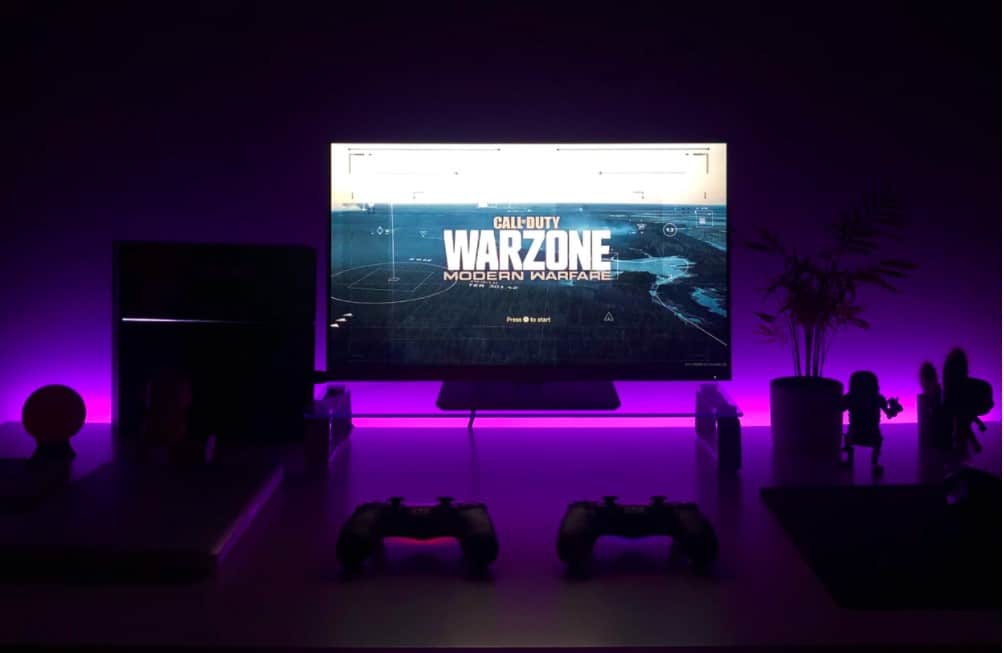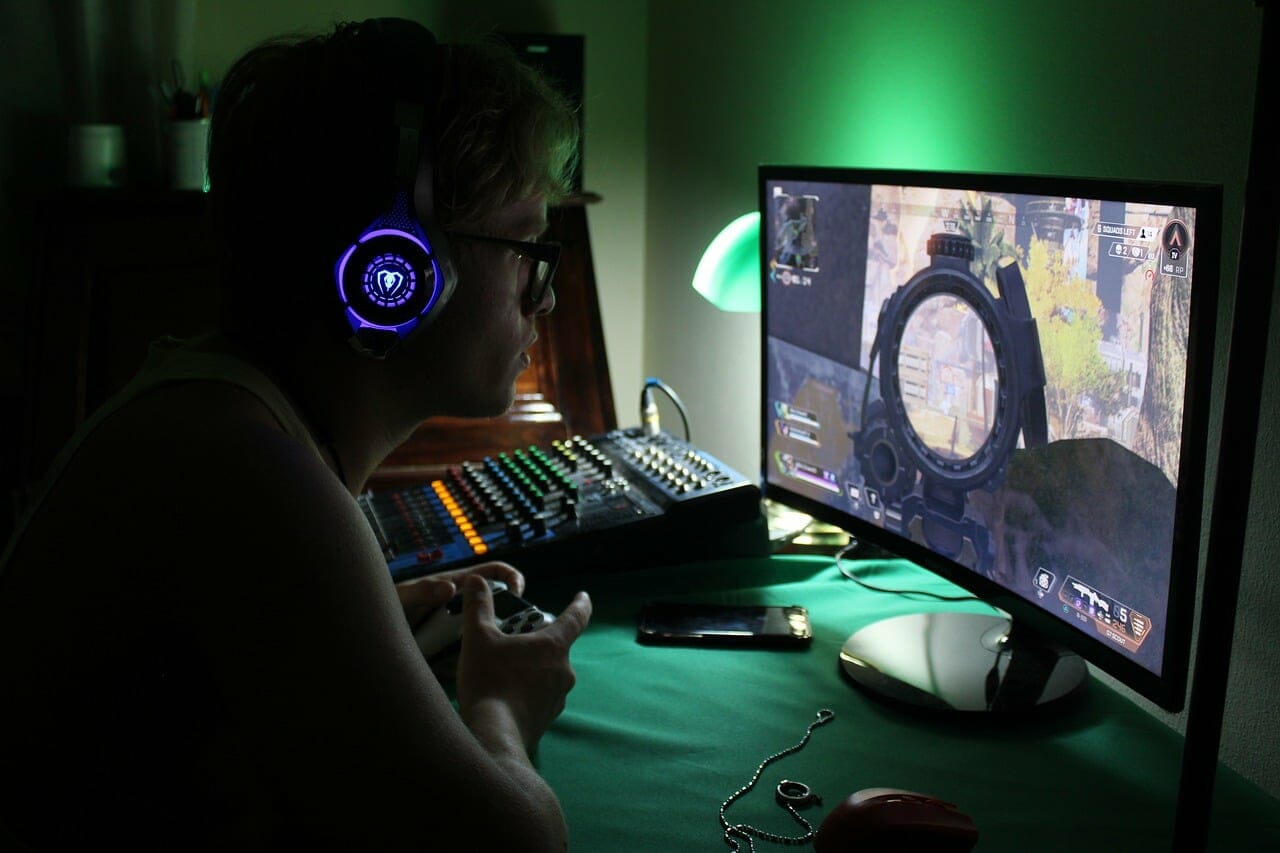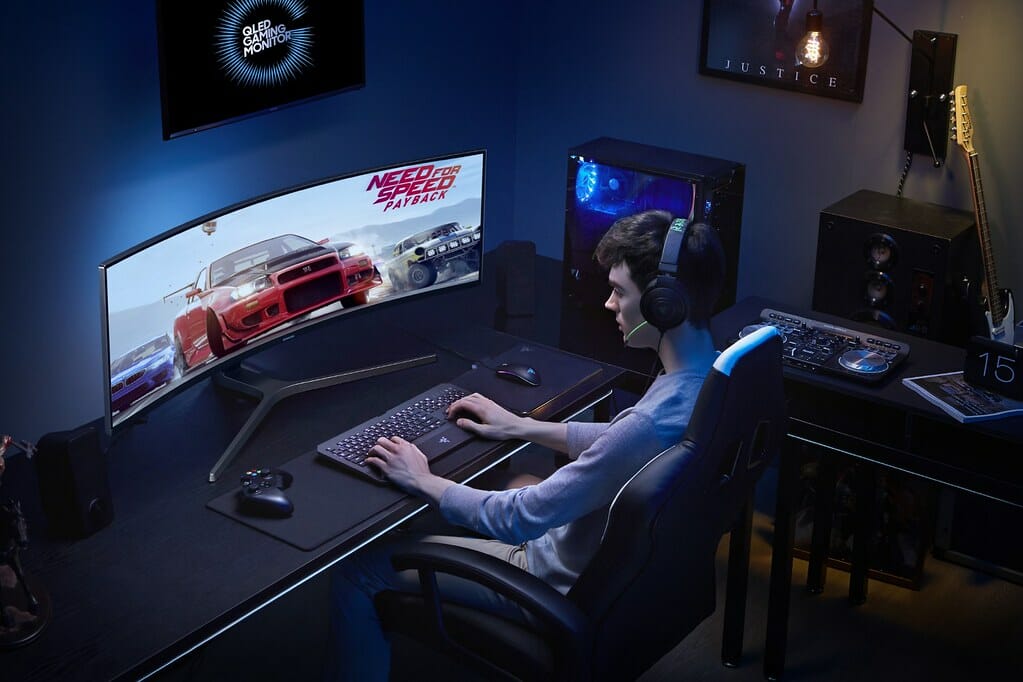Table of Contents
TVs aren’t made equally, so if you want to get your money’s worth, make sure to learn the difference between FHD vs HD vs HD-ready to be able to pick the right TV for your needs.
Understanding this basic television makeup will be a big help if you’re eyeing a TV unit that you can maximize to its full potential. There are so many things to pay attention to when looking for any display that we put it all in one place - whether you are looking for affordable 144Hz computer monitors, the ones under 200 bucks, or for those that cause less eye strain. Also, if you want a monitor for trading, or screens for programmers - we got you covered! They also come in all sorts of shapes and versions so check out the best vertical displays, or the ones that come with in-built speakers here. On the other hand, if you need multiple larger screens for one device, dig into the top bezel less monitors in this review.
Key Takeaways
- HD stands for "high definition" and is used to refer to both "HD Ready" and "Full HD" content.
- An FHD display (with 2 million total pixels) did significantly outperform an HD monitor (with only about 1 million pixels in total).
- Whether you want to use this at home, work, or somewhere else, Full HD is the logical choice.
- The image size is the main difference between HD Ready and Full HD resolutions.
But before we dig deep into the difference between HD, Full HD (FHD), UHD (see also Crystal UHD here) and other formats, you have to understand what image resolution means (see our earlier FPS vs Resolution article).

What is Image Resolution and Why is it Important?
Whenever you shop for a laptop, monitor, screen, TV, and other similar displays, you’ll hear the term “image resolution.”
The picture on your TV, monitor, or any other screen is composed of millions of super-small dots of light called pixels. SD TVs support an image resolution of 480, which means around 480 horizontal lines from the top of your screen to the bottom are responsible for the picture you see on the screen.
HD TVs and displays are better at displaying images because they can show more lines of pixels. In the earlier days of high definition TVs, HD and full HD were lumped together with the "HD" term:
- The lower-end of the HD standard at 720p (displaying a total of 720 lines of pixels),
- Full HD as the higher-end at HD 1080p (displaying a total of 1,080 lines of pixels).
For years now, the lower end HD has been slowly being phased out in favor of the now-standard 1080p full HD. Blu ray, DVD players, cable services, satellite providers, and gaming consoles like box and PlayStation all display 1080p image resolution. Check out what the world's most renowned brands have to say about all this in our Acer monitor review and Asus monitor review.

Is HD Ready the Same as Full HD?
The answer is NO. In both "HD Ready" and "Full HD" terms, HD is used to refer to "high definition." As explained earlier, these two formats are related. In fact, some people watching tv at home don't even see the difference in their image resolutions and may use these terms interchangeably.
HD Ready TV is Out
In 2005, the "HD Ready" certification program was introduced to identify TVs that are capable of accepting and displaying a high-definition signal at 720p resolution (1280x720 pixels). At the time, full HD resolution movies were still rare, even if many Blu Ray, video players, and similar display products support 1080p image resolution.
An HD-Ready TV can handle a High Definition signal, but it is capable of producing a total of 720 lines of images across the screen, which is not Full HD. As such, when a TV screen was labeled HD-ready, it meant that any HD quality video (with 1080 horizontal pixels) is reduced to 720 pixels using overscan technology.
Today, the "HD Ready" tag is quite an outdated concept since 720p resolution (and the higher-pixel 1080p) have become the default minimum for TVs and other similar displays. Also, known for their TV sets, check out what the best Samsung monitor has to offer, or our Sceptre monitor review.

Full HD TV (and other newer formats) are In
As you may have guessed, there are other display formats and some that are more appropriate for today. These include (in order of release):
- SD (standard definition): 720 × 480 image resolution in pixels
- HD (high definition): 1280 x 720 image resolution in pixels
- Full HD (2k): 1920 x 1080 image resolution in pixels
- UHD (ultra-high-definition): 3840 × 2160 resolution in pixels
- 4k (hi-vision system/HV): 4096 × 2160 resolution in pixels
- 8k (super hi-vision system/SHV): 7680 × 4320 resolution in pixels
To help you understand more about these terms, here's what you need to know about FHD ( full high definition ) and HD resolution. Even if your TV is full high definition, there is no guarantee that you’d be able to watch everything in full HD. This isn’t a rip-off though. Your TV can actually display images in HD resolution, but if the cable provider, TV network, or other sources of programming offer the content in SD or HD, the format of your TV wouldn’t matter.
For example: if you have an FHD TV, but the channel you’re watching is showing content in SD, your movie will be in SD. It is for this reason many people still choose an HD TV over 4k UHD TVs (see 'UHD vs HD' post).
While it is easy to bring your eyes to the newest tech, do note that UHD, 4k, and 8k formats with higher resolutions are mostly used in cinemas and larger displays. There are TVs already in the market equipped with these formats, but it would probably take several more years for them to support the massive use of full HD today and the prices to get more affordable for home use.

FHD vs HD - What is the difference?
Now that you've learned about the different formats available, you're probably down to two choices from the same category: Full HD and HD. You just need to know that HD used to be the go-to TV and monitor format before FHD came into the picture.
Yes, an FHD display (with 2 million pixels in total) did make a BIG jump from an HD display (with only about 1 million pixels in total). But you can only feel the difference based on these two factors:
- How far you are seated from the TV: You can see this clearly if you go close to the screen. This is because the better your TV’s resolution is, the closer you’ll be able to sit in front of your TV without the picture quality getting compromised. The images and videos would be sharper, larger, and provide a better experience to the viewer.
- The size of your TV: All 1080p HDTVs have something in common: the same number of pixels (exactly 2,073,600 pixels). This means even if your screens measure 26 inches or 55 inches, they will only support 2,073,600 pixels. The difference between two 1080p HDTVs is that you'll find pixels in a 26-inch TV smaller than the pixel found on a 55-inch TV. A big screen-sized TV isn't always the best, since your video or content would show jagged or blocky pixels if your resolution is only 1080p.

Full HD vs HD: Which Should You Choose?
Well, it should be obvious by now that the number of pixels on Full HD is the best choice, regardless if you're going to use this at your home, office, or elsewhere. Is a full HD TV enough to provide the best experience for you? Here are 3 questions to help you out:
- Are you planning to use your full HD television for gaming at home? Ask any gamer about recommended screens and you'll get 1080 pixels as the lowest image resolution acceptable. Of course, you'd have to consider if the TV can support the games you want to play.
- Are you looking for a TV with the best real estate? If you're trying to find a TV that would serve as your monitor, go for one that could provide a bigger screen space. Check UHD, 4k, 8k, and other similar products to ensure the content you need would be displayed without quality being compromised.
- Are you worried about future-proofing? Both HD and full HD are outdated resolutions (as of 2021), so a monitor, TV, and other display products with 720 or 1080p would still be usable, but they will stay stuck at either 720 or 1080p resolutions. If you’re concerned with the future tech and services you might not be able to utilize with an outdated TV, order Ultra-HDTVs like 4k or 8k instead.
FAQs
1. Which is better HD or FHD?
When it comes to displays, there are many important factors to consider: resolution, viewing angle, color accuracy, and brightness, to name a few. So which is better: HD or FHD?
The answer depends on your needs and preferences. FHD (1920x1080) offers more pixels than HD (1366x768), so it provides a sharper image. If you plan to watch TV or movies or play video games on your laptop, then FHD is the better option.
However, if you mostly use your laptop for productivity tasks such as word processing and spreadsheet work, then HD may be adequate. Keep in mind that the higher the resolution, the more power your laptop will need to display the image correctly. So if you have an older laptop, you may want to stick with HD.
2. Is FHD good enough?
In the market for a new television? You may be wondering if Full High Definition (FHD) is good enough. The answer is yes! FHD has a resolution of 1920x1080, which is more than enough to provide a high-quality picture. In addition, FHD televisions are becoming increasingly affordable, so you can get a great picture without breaking the bank.
3. What is the difference between HD and full HD display?
The primary distinction between HD Ready and Full HD resolutions is the image size. HD can refer to resolutions of 720p or 1080p, but Full HD can only refer to resolutions of 1080p. Full HD resolution, on the other hand, is defined as 1080p tall (height) and 1920 pixels wide.
4. Should I buy 4K or Full HD?
The higher resolution, the better. 4K and FULL HD (see also QHD Vs. FHD) are some of the terms used to describe the screen resolution of a television. HD-ready displays have a resolution of 1,366 x 768 pixels, full HD displays have a resolution of 1,920 x 1,080 pixels, and 4K displays have a resolution of 3,840 x 2,160 pixels. The higher resolution provides detailed image. If you have the budget, we recommend purchasing a 4K television.
5. What is full HD display?
Full HD refers to a monitor that has 1920 pixels horizontally and 1080 pixels vertically, or 1920x1080, and is sometimes abbreviated as 1080p.




